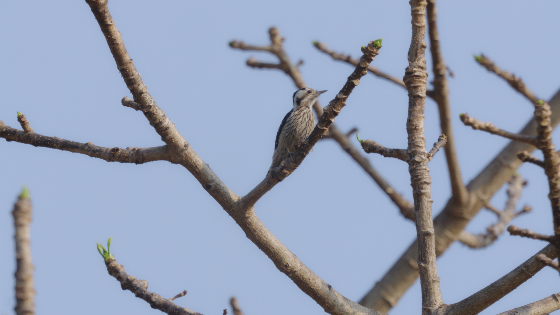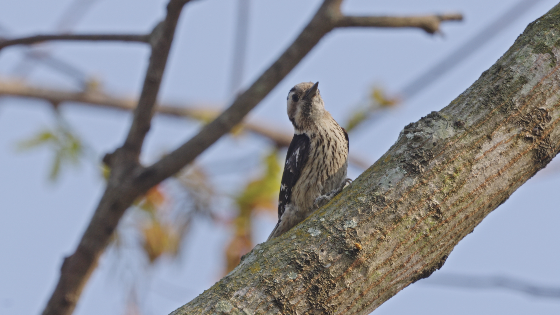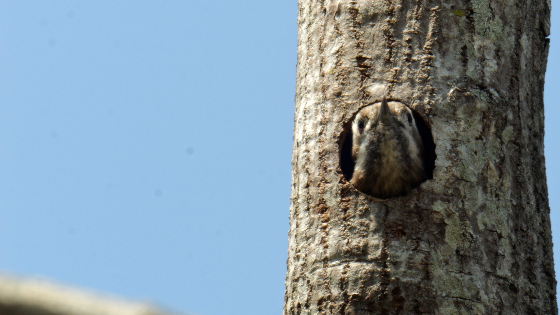By continuing to browser our site and use the services you agree to our use of cookies, Privacy Policy and Terms of Use. You can change your cookie settings through your browser.
A grey-capped pygmy woodpecker has just carved a new home in the trunk of a tall tree.
The grey-capped pygmy woodpecker is a small woodpecker in the Picidae family. Males have a red stripe above and behind their eyes and black vertical stripes on their bellies. In China, they are protected as a beneficial economically or scientifically important species.

A grey-capped pygmy woodpecker forages. Photo courtesy of Discovering Mysteries Season 5 crew
This species of woodpecker can be seen hopping along tree trunks and branches with agile, alert movements. The bird’s song consists of a soft ‘wik’ sound followed by a rapidly descending trill. The hard beak acts as both a chisel and a detector helping the woodpecker uncover its main source of energy, insect larvae hidden under the bark.
Before leaving the nest to look for food, the grey-capped pygmy woodpecker carefully checks the surrounding environment to ensure safety. In addition to insects, they also feed on fruits, seeds, and other plant material. These birds don’t linger anywhere for very long, always flying quickly back home with their prey.

A grey-capped pygmy woodpecker alertly surveys the environment. Photo courtesy of Discovering Mysteries Season 5 crew
Despite constant careful observation, danger is never far away. When you’re up against this kind of absolute power, hiding is the only way to survive. Only when the crested serpent eagle flies off can the woodpecker begin to relax, but it must remain vigilant.
On the Indian subcontinent, the breeding season of the grey-capped pygmy woodpecker runs from April to July, and from December to April in Southeast Asia. Both parents work together to create the nest, which is usually located at heights of around 5-10 meters above the ground on tree trunks of 2.5 to 15 meters tall. Each clutch contains three to eight eggs, which incubate for 12-13 days. The parents take turns incubating the eggs and feeding the chicks, who leave the nest around 21 days after hatching.

A grey-capped pygmy woodpecker checks for danger before emerging from its nest. Photo courtesy of Discovering Mysteries Season 5 crew
This tiny head sticking out of the nest is the bird’s reason for going on. Stopping is not an option! The woodpecker must head out again. Foraging, observing, confirming safety, flying home, feeding the young.... this cycle will be repeated countless times during nesting season.
FTP Expert Talks | Xiaodong Lee, Vice President of the Internet Society of China and Founder of the Fuxi Institution: Hainan is the "Nebula" of New Digital Youth
09:47, 12-September-2025Hainan Issues Offshore RMB Bonds in HK for 4th Consecutive Year
09:46, 12-September-20252025 Hainan FTP International Students Content Creation Project
02:28, 12-September-2025What Makes "Hainan Travel" So Appealing?
09:38, 11-September-2025100 Days to Go: What's Next for Hainan-Hong Kong Cooperation?
09:38, 11-September-2025Expert Talks Ep. 4: The Future of the FTP's Digital Economy
09:35, 11-September-2025By continuing to browser our site and use the services you agree to our use of cookies, Privacy Policy and Terms of Use. You can change your cookie settings through your browser.





